The natural form of Cape Cod has changed continually over many eras as sand and ocean currents currents wash up and down its shores, altering the coastline endlessly.
When the first Europeans arrived, they were so astounded at the numbers of Codfish that swam its waters that the name Cape Cod was given to the peninsula to reflect this fact. It was said the cod were so thick a person could literally walk across the water on top of the fish.
The cod are gone now, of course, victims of the profit motive and wanton over-fishing.
The interior of the island was covered with hardwood forests. Now, in place of the former giants, scrubby Beach pine and other imported species have taken hold. The old-growth was cut down to build houses and boats, and probably a good deal of it was used in naval construction while Massachusetts was a colony of the British Empire.
Interestingly, the oldest park in the United States is located near Provincetown, where the original Puritan immigrants set aside a few acres of a beech forest for the enjoyment of the population. This park dates to the 1600s and the forest is still there, perhaps five acres or so.
Cape Cod has always been famous for its salt marshes, several of which are happily protected by federal and state law. Many others have been bulldozed for harbors and development.
1) A protected marsh in Eastham, at Fort Hill near Coast Guard Beach. The outer bar, seen in the distance at the top of the photo, seems to have altered structure every time we visit.
On the bay side is Gray’s Beach, quite off the beaten track and a good place to watch for marsh birds.
2) The boardwalk at Gray’s Beach, also known as Bass Hole, on the bay side of the Cape. We were told the walkway used to extend all the way to the bay, but a storm washed the end of it away and the authorities decided not to rebuild. This past August was the first time I ever visited, despite having come to the Cape off and on for fifty years.
Unfortunately, a lot of the beauty of Cape Cod has disappeared under the backhoe. What town can resist the tax revenue from more and more sub-divisions and commercial enterprises?
3) The condos in the distance were constructed over the objections of most residents of the town of Harwich. With their beachfront view they were priced to sell in the multi-million dollar range. However, the project was completed just before the crash of 2008 and several of the units remain unsold. The condos have another attraction: being on the beach makes them subject to complete destruction should a hurricane make landfall here with the same force as the storms of 1938 and 1944
4) Condos of a different sort; moulted horseshoe crab shells
A friend’s family has been coming to the Cape since the late 1800s. Here is his great-grandmother’s house that overlooks Wychmere Harbor in Harwich Port. His mother spent the Great Depression years here with her parents while his grandfather built wooden boats.
Originally constructed for a sea captain, the house has seen a lot of different owners since his ancestor died in 1960.
5) The old family house
Humorously, in the 1970s a couple of party-types bought it, put in a swimming pool in the woods behind the house, and threw many late-night parties. His brothers were occasionally blamed for the noise since his parents owned a cottage in the woods behind the property.
The architecture of Cape Cod is a great draw for many visitors. From the traditional Cape Cod salt box to the modern McMansion, all kinds of styles may be found.
8) A typical newer McMansion in Harwich Port
Here’s a beautiful old house in Harwich Port. At the time we took the photo the structure was in serious disrepair but luckily the place was purchased by buyers who had the means to refit the house and now it looks almost new.
9) House in Harwich Port built circa 1800
At Fort Hill in Eastham a successful whaling captain built this Victorian house as a retirement home, complete with mansard roof and an interesting color scheme. We often wonder what he did socially in his spare time! Perhaps Provincetown was the same hang-out for flamboyant personalities in the nineteenth century as it is in the twenty-first.
10) Sea captain’s house at Fort Hill. The whale jaw gate is a nice touch.
Chatham is a popular place to visit and ranks as one of the wealthiest communities in the United States. At this beach there used to be no protection from the open sea. During World War I a German submarine entered the harbor and lobbed a few shells at the naval station. The war raged on in Europe without anyone being the wiser.
11) The beach at Chatham Light. We saw a pair of humpback whales feeding about half a mile offshore the day this photo was taken
This past summer a few people spotted Great white sharks feeding nearby on seals; the alarm generated in the public was lifted directly from the script of Jaws. The local Harbor seals were hunted to near-extinction many decades ago but their return with protected status seems to have brought the predators with them.
Of course, no short essay can do justice to the natural beauty of Cape Cod. Random impressions may give clues, but to experience the land in all her moods, one must pay an extended visit during the different seasons to obtain real understanding. You can access Cape Cod easily from Logan International Airport in Boston.
12) Sailing out of Wychmere Harbor in an ancient plywood “Waterbug” circa 1965: Photo by Peg and Ken Herring
13) A schooner in Wychmere Harbor, 2007
Photos by Kit and Diana Herring (except where noted)

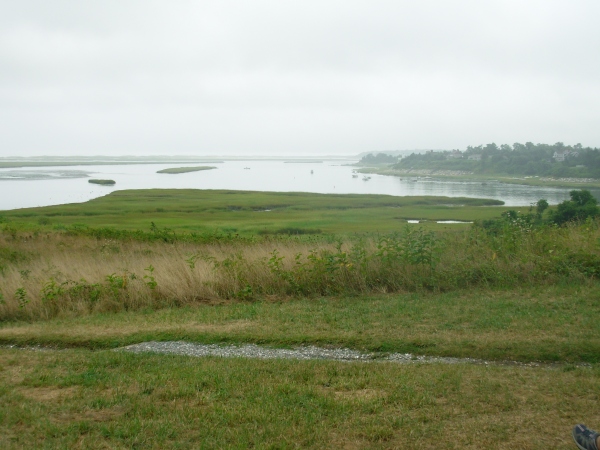
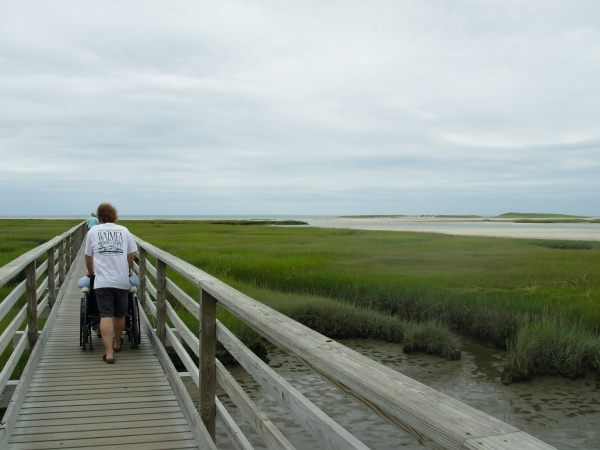
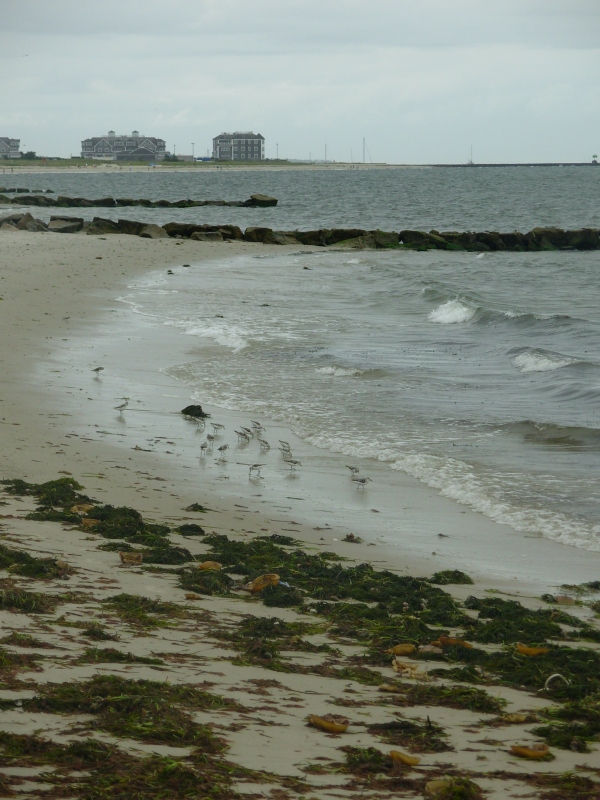


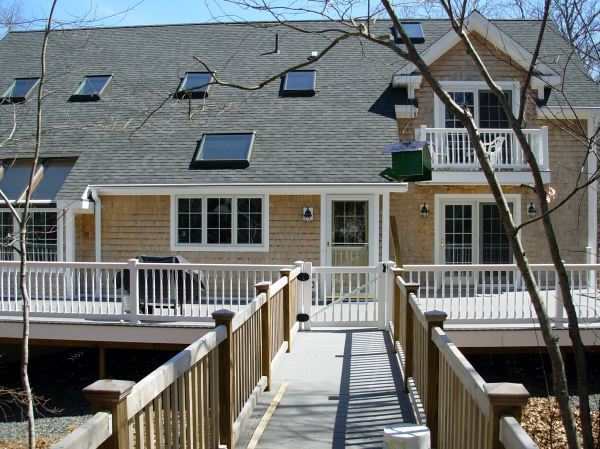


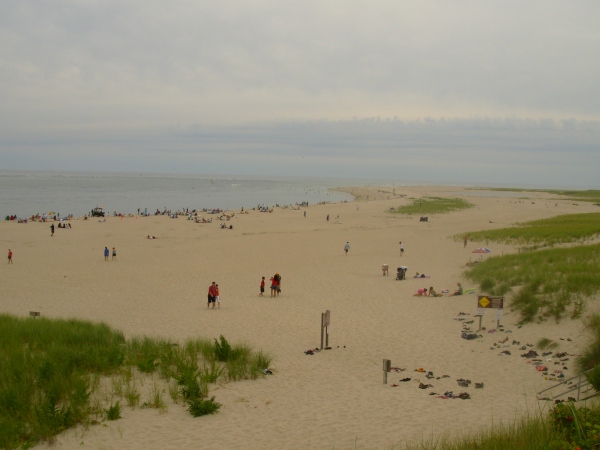
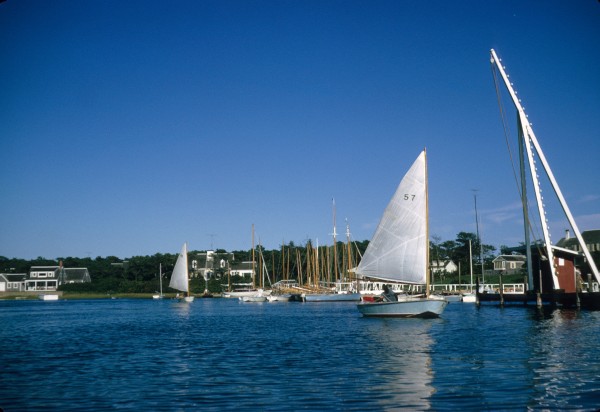
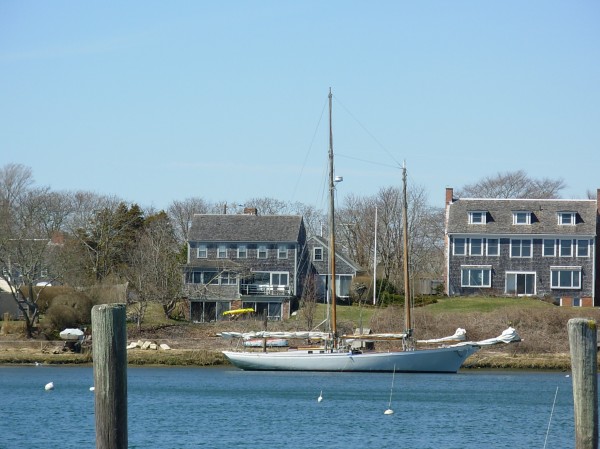
I love Cape Cod, it’s so beautiful and tranquil! I have lived in CA my entire life, but could see myself living there!